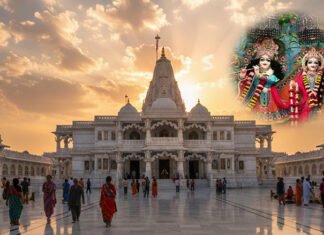Introduction:
Located in the scenic district of Medak in Telangana, the Singur Dam stands as a remarkable testament to engineering prowess and serves multiple crucial purposes. Built primarily for hydroelectric and irrigation needs, the dam also provides drinking water to Hyderabad, one of India’s major cities. Over the years, Singur Dam has evolved into a popular tourist destination, attracting visitors with its serene environment, abundant wildlife, and breathtaking views.
Historical Background
The Singur Dam‘s construction commenced in the early 1980s and reached completion in 1989. The project was part of a broader initiative to harness the waters of the Manjira River for multifaceted benefits. The dam was meticulously planned to address the region’s pressing needs for irrigation, electricity, and potable water. Since its inception, it has played a pivotal role in transforming the local agrarian landscape and boosting the region’s overall development.
Engineering Marvel of Singur Dam
The Singur Dam is a gravity dam, a type of structure that resists the horizontal thrust of water by using its weight. This engineering marvel spans the Manjira River, creating a vast reservoir with a capacity of 29.91 TMC (Thousand Million Cubic feet). The reservoir, often referred to as the Singur Reservoir, serves as a critical water source for various purposes:
- Hydroelectric Power Generation: The dam’s hydroelectric plant harnesses the river’s kinetic energy to produce electricity, contributing to the region’s power supply.
- Irrigation: The reservoir’s waters irrigate vast tracts of agricultural land, supporting the livelihood of countless farmers in the Medak district and beyond.
- Drinking Water Supply: Singur Reservoir is a primary source of drinking water for Hyderabad, ensuring a reliable water supply for the city’s burgeoning population.
Also read: The Charm of Osman Sagar Lake: Beautiful Hyderabad’s Oasis Lake
Ecological Significance
One of the most captivating aspects of the Singur Reservoir is its rich biodiversity. The deep waters of the reservoir are home to approximately 1,000 crocodiles, making it one of the largest habitats for these reptiles in the region. The presence of these majestic creatures adds an element of excitement and intrigue for visitors.
Surrounding the reservoir is a lush expanse of flora and fauna, contributing to the area’s ecological balance. The verdant surroundings are home to various species of birds, insects, and small mammals, creating a thriving ecosystem. For nature enthusiasts and bird watchers, Singur Dam offers an unparalleled opportunity to observe wildlife in their natural habitat.
Tourist Attraction
Singur Dam has steadily grown into a major tourist hotspot in Telangana. Its tranquil environment, combined with the impressive expanse of water, provides a perfect getaway for those looking to escape the hustle and bustle of city life. The reservoir’s serene beauty is a major draw, with visitors often spending hours admiring the panoramic views and the calming effect of the water.
Key Attractions for Tourists in Singur Dam
- Scenic Views: The dam and reservoir offer breathtaking vistas, particularly during sunrise and sunset when the water reflects the changing colors of the sky.
- Boating and Fishing: The reservoir is a popular spot for boating and fishing, providing recreational activities for visitors. Boating allows tourists to explore the expanse of the reservoir and enjoy its tranquil ambiance.
- Crocodile Watching: The presence of crocodiles in the reservoir adds a unique aspect to the visit. Special viewing areas have been set up where visitors can safely observe these magnificent reptiles.
- Picnic Spots: The area around the dam is dotted with picturesque picnic spots, ideal for families and groups looking to spend a day amidst nature.
Impact on Local Communities
The Singur Dam has had a profound impact on the local communities, particularly in the Medak district. Reliable irrigation water has revolutionized regional agriculture, enabling farmers to grow multiple crops year-round. This has significantly boosted the local economy and improved the standard of living for many rural families.
The dam plays a crucial role in supplying drinking water to Hyderabad. As the city continues to grow, the reservoir’s contribution to its water supply is invaluable, ensuring that millions of residents have access to clean, potable water.
Conservation Efforts
Because of its ecological significance, people have actively worked to preserve and protect the environment around Singur Dam. Conservation initiatives focus on maintaining the biodiversity of the area, particularly the crocodile population, which is a unique feature of the reservoir. These efforts are crucial in sustaining the ecological balance and ensuring that future generations can continue to enjoy the natural beauty of Singur Dam.
Also read: Explore Nature: The Best 5 Waterfalls Near Hyderabad for 2024
Future Prospects
Looking ahead, the Singur Dam will continue to play a vital role in the region’s development. Officials are planning to enhance the infrastructure around the dam to accommodate the growing number of tourists. They will improve facilities, including better roads, visitor centers, and guided tours, to make the dam more accessible and enjoyable for visitors.
Timings to visit Singur Dam:
- Everyday best time to visit is 6 am – 7 pm
- Don’t miss the opportunity to enjoy the sunrise and sunset.
Note: Be cautious during the rainy season as the Singur Dam and other nearby dams may overflow.
Conclusion:
Singur Dam benefits Telangana by providing water and electricity while also serving as a key site for tourism and ecological preservation. Its rich history, engineering brilliance, and natural beauty make it a must-visit destination for anyone traveling through Telangana. Whether you’re a nature lover, engineering enthusiast, or seeking a peaceful retreat, Singur Dam offers a truly memorable experience.
Frequently Asked Questions:
The Singur Dam was constructed to generate hydroelectric power, provide irrigation, and supply drinking water to Hyderabad.
Answer: The construction of Singur Dam began in the early 1980s and was completed in 1989.
Answer: Singur Dam attracts tourists with its serene environment, breathtaking views, abundant wildlife, and recreational activities like boating and fishing.
Answer: Yes, the reservoir is home to approximately 1,000 crocodiles and various species of birds, insects, and small mammals.
Answer: Visit Singur Dam between 6 AM and 7 PM daily, with sunrise and sunset offering the most stunning views.











